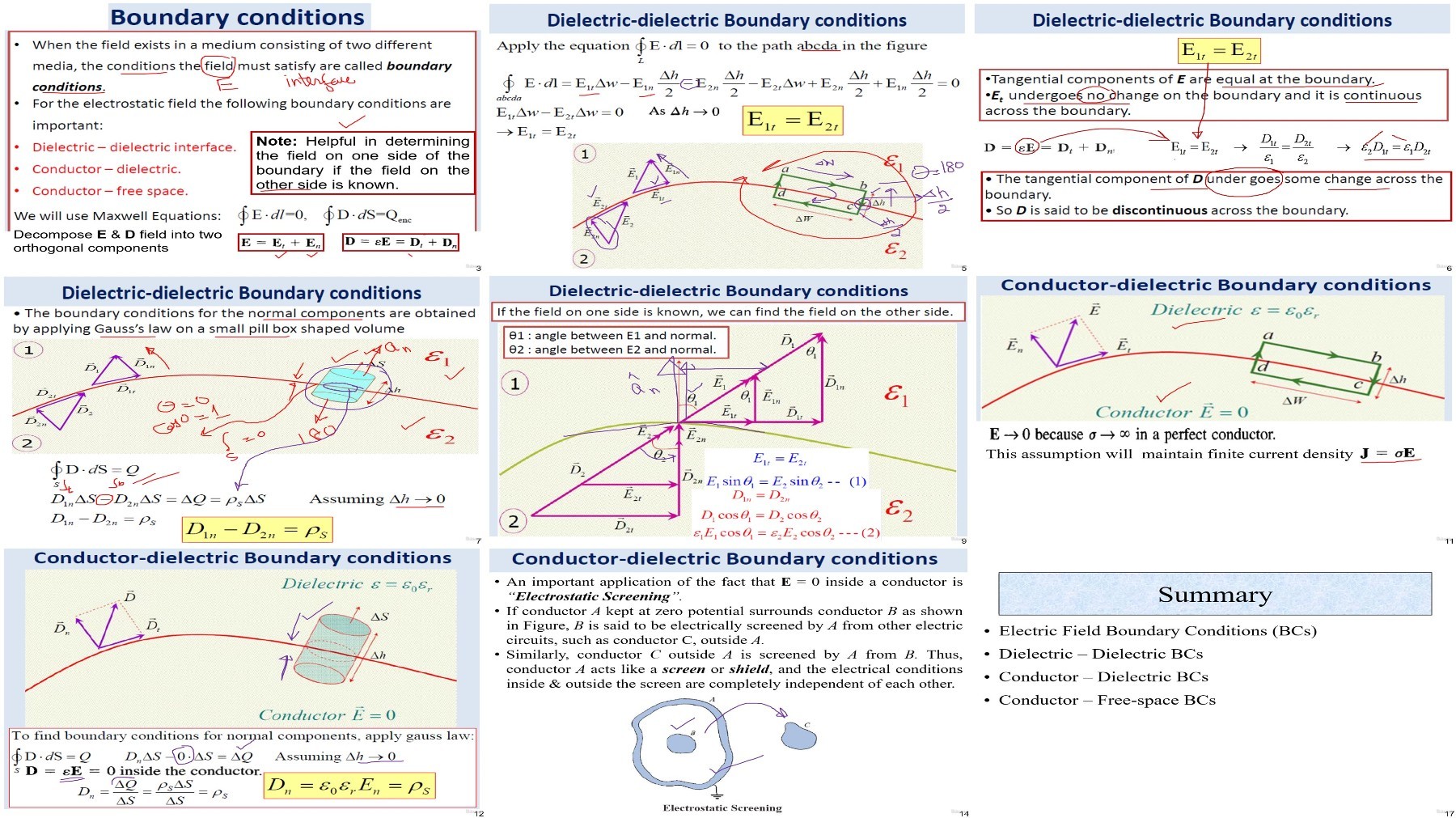
Electromagnetic Wave Theory And Maxwell Equations
Published 3/2024
MP4 | Video: h264, 1920x1080 | Audio: AAC, 44.1 KHz
Language: English
| Duration: 8h 5m
Master EM Theory: Principles, Analysis, Applications
What you'll learn
Fundamental Concepts: Gain a comprehensive understanding of fundamental concepts such as vector algebra, coordinate systems
Electrostatics and Magnetostatics: Explore the principles of electrostatics and magnetostatics, including Coulomb's law, Gauss's law, Biot-Savart's law
Material Properties: Understand the behavior of materials in electric and magnetic fields, including polarization, dielectric constants, and magnetization
Application of Maxwell's Equations: Apply Maxwell's equations to analyze electromagnetic fields and their interactions, enabling the design
Requirements
Basic Knowledge of Calculus: Learners should have a foundational understanding of calculus, including differentiation, integration, and vector calculus, as these mathematical concepts are integral to understanding electromagnetic theory
Physics Fundamentals: Familiarity with basic physics principles such as force, energy, and motion is beneficial for grasping electromagnetic concepts and their applications.
Algebra Proficiency: Proficiency in algebra, including manipulation of equations and solving mathematical problems, is necessary for performing calculations and solving problems in electromagnetism.
Curiosity and Enthusiasm: A willingness to engage with challenging concepts and a curiosity about the behavior of electromagnetic fields and phenomena are essential for making the most of this course.
No prior experience in electromagnetic theory is required, and the course is designed to accommodate learners at various levels of expertise. Additional resources and support will be provided to help beginners grasp foundational concepts and progress through the course successfully.
Description
Delve into the fascinating world of Electromagnetic Wave Theory and Maxwell's Equations in this comprehensive course. From fundamental concepts to practical applications, you'll gain a thorough understanding of electromagnetic phenomena and their significance in various engineering disciplines. Explore vector algebra, coordinate systems, differential operations, and material properties essential for analyzing electromagnetic fields. Discover how Maxwell's Equations are the cornerstone of electromagnetics, enabling the analysis of electric and magnetic fields in static and dynamic conditions. Whether you're a student, professional, or enthusiast, this course equips you with the knowledge and skills to confidently tackle real-world challenges in electromagnetism.Course Contents:Section 1: Pre-Course LecturesLecture 1: Recap of Different Concepts Prepare for the journey ahead with a comprehensive recap of essential concepts, laying the groundwork for understanding electromagnetic theory.Section 2: IntroductionLecture 2: Electric Fields Due to Continuous Charge Distribution & Electric Field Density (Preview enabled) Explore the fundamentals of electric fields generated by continuous charge distributions and delve into the concept of electric field density.Section 3: Gauss's Law and ApplicationsLecture 3: Gauss's Law and its Applications (Preview enabled) Uncover the principles of Gauss's Law and its wide-ranging applications in understanding electric fields and charge distributions.Section 4: Electric Potential and Relationship with Electric FieldLecture 4: Electric Potential and Relationship between Electric Field and Potential Understand the concept of electric potential and its intrinsic relationship with the electric field, paving the way for deeper insights into electromagnetism.Section 5: Electric Dipole, Electric Flux Lines, and Equipotential SurfacesLecture 5: Relationship between Electric Field and Electric Potential & Electric Dipole Explore the intricate relationship between electric fields and potentials, along with the phenomenon of electric dipoles.Lecture 6: Flux Lines, Equipotential Surfaces & Energy Density Dive into the visualization of electric fields through flux lines and equipotential surfaces, while also understanding the concept of energy density within electric fields.Section 6: Properties of Materials and PolarizationLecture 7: Properties of Materials, Convection & Conduction Currents Investigate the behavior of materials in electric fields, including convection, conduction currents, and their implications.Lecture 8: Polarization in Dielectrics, Dielectric Constant Explore the concept of polarization in dielectric materials and understand the significance of dielectric constants in electromagnetism.Section 7: LIH Dielectrics, Continuity Equation, and Relaxation TimeLecture 9: Linear, Isotropic, and Homogeneous Dielectrics, Continuity Equation, and Relaxation Time Delve into the properties and behavior of linear, isotropic, and homogeneous dielectric materials, along with the continuity equation and relaxation time.Section 8: Electric Boundary ConditionsLecture 10: Electric Boundary Conditions Gain insights into electric boundary conditions and their role in understanding the behavior of electric fields at material interfaces.Lecture 11: Electric Boundary Conditions Examples Apply the principles of electric boundary conditions through practical examples, enhancing your problem-solving skills in electromagnetism.Section 9: Resistance and CapacitanceLecture 12: Resistance and Capacitance (Part 1) Explore the concepts of resistance and capacitance in electrical circuits, laying the foundation for understanding circuit behavior.Lecture 13: Resistance and Capacitance (Part 2) Further delve into the intricacies of resistance and capacitance, examining their role in electrical systems and circuits.Section 10: Poisson's & Laplace's Equations, Uniqueness TheoremLecture 14: Poisson's & Laplace's Equations, Uniqueness Theorem Understand Poisson's and Laplace's equations, along with the uniqueness theorem, and their significance in solving electrostatic problems.Section 11: Method of ImagesLecture 15: Method of Images Explore the method of images as a powerful tool in solving electrostatic problems involving conductors and dielectrics.Embark on your journey through Electromagnetic Wave Theory, mastering foundational concepts and analytical techniques essential for understanding and applying electromagnetism in diverse engineering domains.
Overview
Section 1: Introduction
Lecture 1 EF due to Continuous Charge Disn & EF Density
Section 2: Gauss's Law and Applications
Lecture 2 Gauss's Law and its Applications
Section 3: Electric Potential and Relationship with Electric Field
Lecture 3 Electric Potential and Relationship between E and V field
Section 4: Electric Dipole, Electric Flux Lines, and Equipotential Surfaces
Lecture 4 Relationship between E and V & Electric Dipole
Lecture 5 Flux Lines, Equipotential Surfaces & Energy Density
Section 5: Properties of Materials and Polarization
Lecture 6 Properties of Materials, Convection & Conduction Currents
Lecture 7 Polarization in Dielectrics, Dielectric Constant
Section 6: LIH Dielectrics, Continuity Equation, and Relaxation Time
Lecture 8 LIH Dielectrics, Continuity Equation, and Relaxation Time
Section 7: Electric Boundary Conditions
Lecture 9 Electric Boundary Conditions
Lecture 10 Electric Boundary Conditions Examples
Section 8: Resistance and Capacitance
Lecture 11 Resistance and Capacitance ( Part 1 )
Lecture 12 Resistance and Capacitance ( Part 2 )
Section 9: Poisson's & Laplace's Equations, Uniqueness Theorem
Lecture 13 Poisson's & Laplace's Equations, Uniqueness Theorem
Section 10: Method of Images
Lecture 14 Method of Images
Engineering Students: Students pursuing degrees in electrical engineering, electronics engineering, telecommunications engineering, or related fields will find this course essential for building a strong foundation in electromagnetism, which is central to their academic curriculum and future career prospects.,Professionals in Engineering Fields: Engineers and professionals working in industries such as telecommunications, electronics, power systems, and electromechanical systems can benefit from this course to enhance their understanding of electromagnetic theory and its practical applications in their respective fields.,Researchers and Academics: Researchers and academics in the field of electromagnetics, applied physics, or engineering will find this course valuable for deepening their knowledge and exploring advanced topics in electromagnetic theory, providing a solid groundwork for further research and academic pursuits.,Hobbyists and Enthusiasts: Individuals with a keen interest in understanding how everyday electronic devices work or those pursuing electronics as a hobby can also benefit from this course, gaining insights into the principles behind electromagnetic phenomena and improving their problem-solving skills in electronics-related projects.

Free search engine download: Electromagnetic Wave Theory and Maxwell Equations
